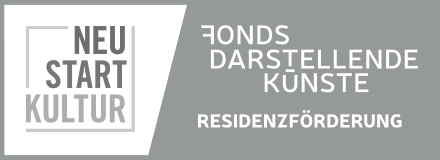







This week ́s focus was on experimenting with different stage lights and on how the presence and absence of spectators would change our feelings, thoughts and movements.
While focusing on individual photo shootings last week to create more intimate and private pictures, this week’s approach was to bring the three of us in interaction and relation in front of the camera.
We advanced our transcription process and created individual movement material and choreographic phrases based on the footage material of last week and brought them into interaction. Experimenting further with these phrases, playing with different movement qualities and tasks of how to interact with each other (e.g. using the gaze, taking up space or becoming very small) gave us new choreographic insights on the functions and power dynamics of shame that were also reflected in our theoretical research.
To get even more impulses we brought these improvisational tasks into different settings, using public spaces like the harbor as well as private places.
Another example of how we approached the physical exploration of the topic was working with selected body parts that we are ashamed of or that we felt ashamed about in the past. We explored their inner and outer shape, their dynamics and qualities and brought them into dialogue in our own bodies. Experiencing the confrontation with shame and spectating it in other bodies was opening a new perspective on how to interpret
the feelings that are connected to shame in dance and movement.
Using actual spotlights and darkness in the theater as two options to move in and in between brought another layer of exploration in this process. We used both of these elements to bring it into the work with the students from university and researched possible ways of interacting with the audience as well as how the presence of spectators would change our experience while dancing. Both experiences gave us a lot of impulses for our further work and the making-off in the end of this month. Furthermore, we tried out a transcription process between dance and photography that was based on verbalization and perception of the students.
Striking out to us was the fact that the presence of many outside eyes did not affect us in the negative way we expected it to do. It led us to the general challenge of how to confront us with this sensitive topic in a safe space and still leaving our comfort zone to learn something new. Another challenge we faced is the complexity of bringing two art forms into an interactive process, finding the moments where they meet and yet have to proceed their own ways and methods in order to not simply react on each other, like doing dance documentation or interpreting a picture.
As the process is going on and deeper into the topic, we also had more intense and emotional theoretical and personal exchanges during this week, dealing with information on secondhand embarrassment, the pathology of shame, the shame of surviving the Shoah and German shame. Especially the last topic raised the question of whether German shame is a question specifically or more present for certain generations and how it is dealt with nowadays.
We also discussed the positive aspects of shame and how they could be used as a method for social change.
Even though shame is the general starting point for our research and always in the center of our interest, the process brought us also to output and material that is getting more abstract for the outside perspective. We involved a member of the theater to reflect our work and give us an outside perspective on how our work is perceived and interpreted.

flausen+headquarters
Alexanderstraße 124
26121 Oldenburg
flausen+gGmbH
Klävemannstraße 16
26122 Oldenburg
Das überregionale Netzwerk flausen+ wird gefördert von dem Beauftragten der Bundesregierung für Kultur und Medien über das Programm “Verbindungen fördern” des Bundesverbands Freie Darstellende Künste e.V.
Gefördert vom Fonds Darstellende Künste aus Mitteln des Beauftragten der Bundesregierung für Kultur und Medien im Rahmen von NEUSTART KULTUR.
Gefördert vom Fonds Darstellende Künste aus Mitteln des Beauftragten der Bundesregierung für Kultur und Medien.



